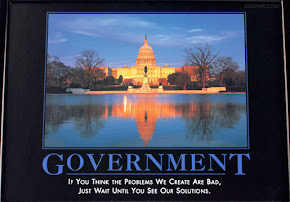Thursday, January 28, 2010
Newt's New Contract With America
Excerpt: II) An Alternative Party — Not an Opposition Party
Part of the power of a contract strategy is that it forces Republicans to quit being an opposition party and enables them to become an alternative party. This was the key part of our calculus in developing the original contract.
We knew that the Ross Perot voters (the tea party independents of their day) would not turn out for a negative campaign. They were angry at all politicians, and they would have stayed home if Republicans had merely been the anti-Clinton party. This is, in fact, what happened in 1998 when we could not get the leadership in the House and the Senate to develop a reform agenda. Our vote fell off because we were seen as negative and obstructionist.
To attract the Perot voter, we wanted to be relentlessly positive.
With then-Republican National Committee Chairman Haley Barbour’s financial support, we bought a two-page ad in TV Guide (then the most widely read publication in America).
The contract had no pictures, did not mention Clinton or the Democrats, and was almost boring in its typeface. It was designed to look and feel different. The original is now in the Smithsonian.
Because it was so positive, we reassured the Perot voters that we were different from traditional politicians. They concluded we were worth turning out and voting for.
Read it here.
Part of the power of a contract strategy is that it forces Republicans to quit being an opposition party and enables them to become an alternative party. This was the key part of our calculus in developing the original contract.
We knew that the Ross Perot voters (the tea party independents of their day) would not turn out for a negative campaign. They were angry at all politicians, and they would have stayed home if Republicans had merely been the anti-Clinton party. This is, in fact, what happened in 1998 when we could not get the leadership in the House and the Senate to develop a reform agenda. Our vote fell off because we were seen as negative and obstructionist.
To attract the Perot voter, we wanted to be relentlessly positive.
With then-Republican National Committee Chairman Haley Barbour’s financial support, we bought a two-page ad in TV Guide (then the most widely read publication in America).
The contract had no pictures, did not mention Clinton or the Democrats, and was almost boring in its typeface. It was designed to look and feel different. The original is now in the Smithsonian.
Because it was so positive, we reassured the Perot voters that we were different from traditional politicians. They concluded we were worth turning out and voting for.
Read it here.
Labels:
Republican
Subscribe to:
Post Comments (Atom)






























No comments:
Post a Comment